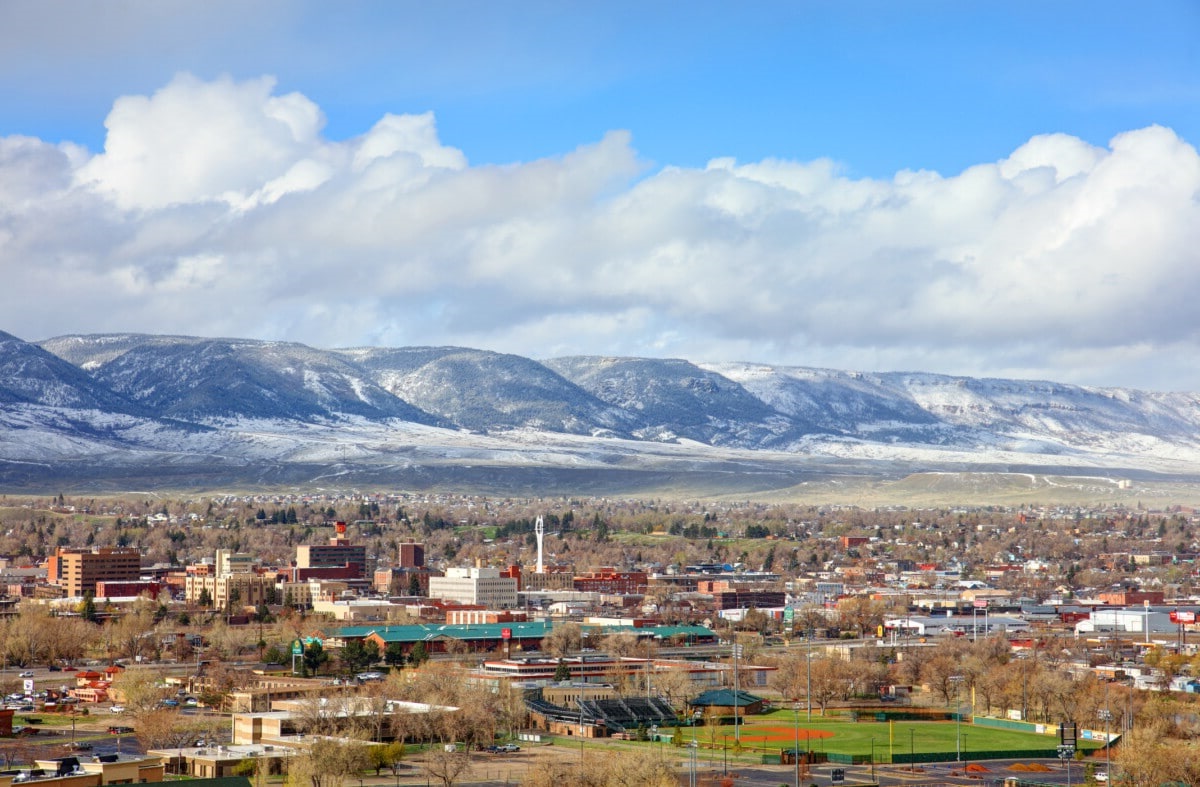Home>Weather and Climate>South Carolina Weather: A Comprehensive Guide To Year-Round Climate


Weather and Climate
South Carolina Weather: A Comprehensive Guide To Year-Round Climate
Published: March 1, 2024
Discover the diverse weather and climate of South Carolina with our comprehensive guide, providing insights into year-round conditions and forecasts. Explore the state's unique meteorological patterns and plan your activities accordingly.
(Many of the links in this article redirect to a specific reviewed product. Your purchase of these products through affiliate links helps to generate commission for Temperatures.com, at no extra cost. Learn more)
Table of Contents
- Introduction
- Understanding South Carolina's Climate Zones
- Spring Weather in South Carolina
- Summer Weather in South Carolina
- Fall Weather in South Carolina
- Winter Weather in South Carolina
- Extreme Weather Events in South Carolina
- How Climate Change is Impacting South Carolina's Weather
- Tips for Dressing for South Carolina's Year-Round Climate
- Conclusion
Introduction
South Carolina, known for its stunning coastline, historic cities, and lush landscapes, boasts a diverse climate that offers a little something for everyone. From the balmy beaches to the picturesque mountains, the Palmetto State experiences a wide range of weather patterns throughout the year. Understanding the nuances of South Carolina's climate can help residents and visitors alike prepare for the ever-changing conditions and make the most of their time in this beautiful state.
In this comprehensive guide, we will delve into the various climate zones of South Carolina, exploring the distinct weather patterns that define each season. From the vibrant blooms of spring to the sweltering heat of summer, the crisp air of fall, and the occasional snowfall of winter, each season brings its own unique charm and challenges. Additionally, we will take a closer look at how climate change is impacting South Carolina's weather and provide valuable tips for dressing appropriately for the state's year-round climate.
Whether you're planning a beach getaway, a hike in the mountains, or simply want to gain a deeper understanding of South Carolina's weather, this guide will equip you with the knowledge needed to navigate the diverse climate of the Palmetto State. So, let's embark on a journey through the changing seasons and discover the captivating weather that shapes life in South Carolina.
Read more: South Carolina Monthly Temperature Guide
Understanding South Carolina's Climate Zones
South Carolina's climate can be divided into three primary zones: the coastal zone, the central zone, and the mountain zone. Each zone exhibits distinct weather patterns and temperature variations, contributing to the state's overall diverse climate.
Coastal Zone
The coastal zone, encompassing the eastern edge of the state, experiences a maritime climate characterized by mild winters and warm, humid summers. The proximity to the Atlantic Ocean influences the weather, resulting in relatively consistent temperatures throughout the year. Winters are mild, with average temperatures ranging from the mid-40s to low 60s Fahrenheit, while summers bring warm and humid conditions, with average temperatures in the high 70s to low 90s Fahrenheit. The coastal region also experiences a higher frequency of tropical storms and hurricanes, particularly during the Atlantic hurricane season from June to November.
Central Zone
Moving inland, the central zone of South Carolina features a transitional climate, blending elements of both the coastal and mountain zones. This region experiences slightly cooler temperatures compared to the coast, with more distinct seasonal variations. Winters are cooler, with average temperatures ranging from the mid-30s to mid-50s Fahrenheit, while summers are warm and humid, with average temperatures in the high 80s to low 90s Fahrenheit. The central zone also encounters occasional thunderstorms and the potential for severe weather during the spring and summer months.
Mountain Zone
In the western part of the state, the mountain zone showcases a mountainous climate with noticeably cooler temperatures, especially at higher elevations. Winters in the mountains are cold, with average temperatures ranging from the mid-20s to low 40s Fahrenheit, and snowfall is not uncommon. Summers are milder compared to the central and coastal regions, with average temperatures in the mid-70s to low 80s Fahrenheit. The mountain zone experiences more significant temperature variations throughout the year, and the higher elevations contribute to the formation of unique microclimates within the region.
Understanding these distinct climate zones is essential for residents and visitors alike, as it provides valuable insights into the diverse weather patterns that define South Carolina's landscape. Whether you're planning a beach vacation along the coast, exploring the historic cities in the central region, or embarking on a mountain adventure in the western part of the state, being aware of the climate variations can enhance your overall experience and preparedness for the changing weather conditions.
Spring Weather in South Carolina
Spring in South Carolina heralds the arrival of blooming azaleas, vibrant dogwoods, and a palpable sense of renewal. This season, spanning from March to May, brings a delightful transition from the cooler temperatures of winter to the warmth of impending summer. As nature awakens from its wintry slumber, South Carolina's landscapes burst into a kaleidoscope of colors, offering a picturesque backdrop for outdoor enthusiasts and nature lovers.
During the early months of spring, South Carolina experiences a gradual rise in temperatures, with average highs ranging from the upper 60s to low 70s Fahrenheit. The coastal region enjoys milder conditions, while the central and mountain zones witness a gradual thawing of the winter chill. As the season progresses, temperatures climb steadily, reaching the pleasant range of the upper 70s to low 80s Fahrenheit by late spring.
Springtime in South Carolina also brings an increase in rainfall, contributing to the rejuvenation of flora and fauna. The state's lush greenery comes alive with the gentle patter of rain, nurturing the iconic palmetto trees and diverse plant life that define the region. While occasional showers are common, they are often brief and give way to sunny skies, creating a refreshing ambiance that is synonymous with the season.
Moreover, spring marks the onset of the blooming season, with azaleas, wisteria, and magnolias painting the landscape with their resplendent hues. The annual Azalea Festival in Charleston and the South Carolina Botanical Garden in Clemson are just a few of the many places where visitors can immerse themselves in the breathtaking beauty of these floral displays.
In addition to the natural splendor, spring in South Carolina also brings a sense of anticipation for outdoor activities and cultural events. From leisurely strolls along the waterfront parks to attending music festivals and farmers' markets, the season offers an array of opportunities to engage with the local community and savor the charm of South Carolina's springtime.
As spring unfolds, it sets the stage for the vibrant festivities and outdoor adventures that await residents and visitors. Whether it's exploring the historic streets adorned with blossoms or embarking on a scenic hike amidst nature's awakening, South Carolina's spring weather beckons all to embrace the enchanting spirit of the season.
Summer Weather in South Carolina
Summer in South Carolina ushers in a time of abundant sunshine, balmy temperatures, and a palpable sense of vitality. Spanning from June to August, this season brings forth a symphony of warmth and outdoor adventures, enticing residents and visitors to immerse themselves in the state's vibrant summer offerings.
The coastal region experiences the quintessential essence of a Southern summer, with average temperatures ranging from the high 70s to low 90s Fahrenheit. The combination of heat and humidity creates a sultry atmosphere, inviting beachgoers to seek refuge in the refreshing waters of the Atlantic Ocean. The coastal breeze provides a welcome respite from the summer heat, making it an ideal time to indulge in seaside activities, from sunbathing on the pristine shores to partaking in water sports and leisurely beachcombing.
In the central zone, summer brings warm and humid conditions, with average temperatures hovering in the high 80s to low 90s Fahrenheit. The region's urban centers, including Columbia and Greenville, come alive with a buzz of energy as residents and tourists embrace the longer daylight hours and balmy evenings. From outdoor concerts and al fresco dining to exploring the state's rich historical sites, the central zone offers a myriad of opportunities to revel in the summer ambiance.
The mountain zone, while slightly cooler than the coastal and central regions, still experiences pleasantly warm temperatures during the summer months, with average highs in the mid-80s Fahrenheit. The mountainous terrain provides a refreshing escape from the summer heat, attracting outdoor enthusiasts seeking cooler climes for hiking, camping, and exploring the scenic beauty of the Blue Ridge Mountains.
Summer in South Carolina also heralds the arrival of seasonal events and festivities, adding to the allure of the season. From lively music festivals and farmers' markets brimming with fresh produce to cultural celebrations and outdoor gatherings, there is no shortage of ways to embrace the vibrant spirit of summer. Additionally, the state's numerous waterways, including lakes and rivers, offer opportunities for boating, fishing, and other water-based activities, providing a refreshing reprieve from the summer heat.
As the sun sets on each summer day, South Carolina's warm evenings beckon residents and visitors to savor the enchanting twilight hours. Whether it's enjoying a leisurely stroll through the historic streets, sipping sweet tea on a porch, or relishing a delectable Lowcountry feast, the summer weather sets the stage for unforgettable moments and cherished memories.
In essence, South Carolina's summer weather invites all to bask in the radiance of the season, embracing the abundance of outdoor pursuits, cultural experiences, and the timeless charm that defines the Palmetto State during this sun-kissed time of year.
Fall Weather in South Carolina
Fall in South Carolina paints a mesmerizing portrait of nature's transformation, as the vibrant hues of autumn foliage adorn the landscapes, creating a breathtaking tapestry of colors. Spanning from September to November, this season brings a refreshing change in temperatures and a sense of anticipation for the upcoming holidays, making it a cherished time for residents and visitors alike.
As summer gradually gives way to fall, South Carolina experiences a delightful shift in weather patterns. The coastal region welcomes cooler temperatures, with average highs ranging from the mid-70s to low 80s Fahrenheit, offering a pleasant respite from the summer heat. The gentle sea breeze carries a hint of crispness, signaling the onset of the autumnal equinox and setting the stage for outdoor activities along the picturesque coastline.
In the central zone, fall brings a gradual cooling of temperatures, with average highs in the mid-70s to low 80s Fahrenheit. The region's urban centers, including Charleston and Columbia, exude a captivating charm as the streets adorned with autumnal foliage beckon residents and visitors to explore the historic districts and cultural landmarks amidst the backdrop of nature's seasonal transformation.
The mountain zone showcases the most dramatic display of fall foliage, as the lush forests and rolling hills transform into a kaleidoscope of reds, oranges, and golds. The cooler temperatures, with average highs in the mid-60s to low 70s Fahrenheit, create an idyllic setting for outdoor enthusiasts to embark on scenic drives along the Blue Ridge Parkway or partake in invigorating hikes amidst the resplendent beauty of the changing leaves.
Moreover, fall in South Carolina brings a sense of festivity and community, with an array of seasonal events and harvest celebrations. From pumpkin patches and corn mazes to Oktoberfest gatherings and vineyard tours, there are ample opportunities to embrace the spirit of fall and savor the abundance of local produce and culinary delights.
As the days grow shorter and the nights become crisper, fall in South Carolina invites residents and visitors to revel in the enchanting ambiance of the season. Whether it's sipping apple cider at a charming orchard, attending fall festivals, or simply taking leisurely strolls through nature's vibrant canvas, the fall weather sets the stage for unforgettable moments and cherished memories amidst the captivating beauty of South Carolina's autumnal splendor.
Winter Weather in South Carolina
Winter in South Carolina brings a touch of seasonal enchantment, as the state undergoes a subtle transformation into a winter wonderland. Spanning from December to February, this season ushers in a change in weather patterns, offering a unique perspective on the diverse climate of the Palmetto State.
The coastal region experiences milder winters compared to the central and mountain zones, with average temperatures ranging from the mid-40s to low 60s Fahrenheit. While snowfall is infrequent, the coastal areas occasionally witness a dusting of snow, creating a picturesque contrast against the backdrop of the sandy shores and swaying palmetto trees. The winter months also bring a sense of tranquility to the coastal communities, offering a quieter ambiance for residents and visitors to savor the natural beauty of the region.
In the central zone, winters are cooler, with average temperatures ranging from the mid-30s to mid-50s Fahrenheit. While snowfall is rare, the region experiences occasional frost and chilly mornings, adding a touch of seasonal crispness to the urban landscapes and rural countryside. The historic cities of Charleston and Columbia exude a timeless charm during the winter months, inviting exploration of their rich cultural heritage amidst the cooler temperatures.
The mountain zone showcases the most significant winter weather in South Carolina, with noticeably colder temperatures and occasional snowfall. Average highs range from the mid-40s to low 50s Fahrenheit, while the higher elevations experience even cooler conditions, creating ideal settings for winter activities such as skiing, snowboarding, and cozy mountain getaways. The snow-capped peaks and frost-kissed forests paint a picturesque scene, captivating outdoor enthusiasts and nature lovers seeking the quintessential charm of a Southern winter.
Moreover, winter in South Carolina brings a sense of coziness and warmth, as residents and visitors embrace the season's offerings. From sipping hot cocoa by crackling fireplaces to attending holiday festivals and exploring the state's historic landmarks adorned with seasonal decorations, there are ample opportunities to revel in the enchanting ambiance of winter. Additionally, the state's culinary scene comes alive with comforting Southern fare, offering a delectable array of hearty dishes that reflect the seasonal spirit.
As the winter days unfold, South Carolina's diverse climate invites all to embrace the unique charm of the season, whether it's relishing the tranquility of the coastal landscapes, exploring the cultural heritage of the central region, or immersing in the winter wonderland of the mountains. Winter weather in South Carolina sets the stage for unforgettable moments and cherished memories amidst the captivating beauty of the season.
Extreme Weather Events in South Carolina
South Carolina, like many states, is no stranger to extreme weather events that can pose significant challenges to its residents and infrastructure. From powerful hurricanes and tropical storms to severe thunderstorms and occasional winter weather, the Palmetto State experiences a diverse array of weather phenomena that demand vigilance and preparedness.
One of the most notable extreme weather events that impact South Carolina is the occurrence of hurricanes and tropical storms. The state's coastal regions are particularly vulnerable to the destructive forces of these powerful storms, which bring heavy rainfall, strong winds, and storm surges. The devastating effects of hurricanes, such as Hurricane Hugo in 1989 and Hurricane Florence in 2018, serve as stark reminders of the potential impact of these natural disasters. The state has also experienced the wrath of tropical storms, which can unleash torrential rains and flooding, posing significant risks to communities and infrastructure.
In addition to tropical weather, South Carolina encounters severe thunderstorms, often accompanied by lightning, damaging winds, and hail. These intense storms can lead to localized flooding, downed trees, and power outages, particularly during the spring and summer months. The state's central and coastal regions are more susceptible to these severe weather events, requiring proactive measures to mitigate potential risks and ensure public safety.
Furthermore, South Carolina experiences occasional winter weather events, including snow and ice storms, especially in the mountainous western region. While not as frequent as in northern states, these winter phenomena can impact travel, infrastructure, and daily routines, necessitating careful planning and preparedness to navigate the challenges posed by wintry conditions.
The state's susceptibility to extreme weather events underscores the importance of proactive measures, emergency preparedness, and community resilience. Government agencies, emergency management organizations, and local communities work diligently to enhance disaster preparedness, implement evacuation plans, and provide timely warnings to mitigate the impact of extreme weather events.
As South Carolina continues to grapple with the realities of a changing climate and the potential for more frequent and intense weather events, ongoing efforts to bolster infrastructure, improve emergency response capabilities, and raise public awareness about weather-related risks are crucial for safeguarding the well-being of the state's residents and preserving its natural and built environments.
In summary, South Carolina's diverse climate brings with it a range of extreme weather events, from hurricanes and tropical storms to severe thunderstorms and occasional winter weather. Understanding the risks associated with these phenomena and taking proactive measures to enhance preparedness and resilience are essential for mitigating the impact of extreme weather events and ensuring the safety and well-being of the state's residents.
How Climate Change is Impacting South Carolina's Weather
Climate change is exerting a discernible influence on South Carolina's weather patterns, manifesting in various ways that have tangible implications for the state's ecosystems, communities, and economy. One of the most notable impacts of climate change on South Carolina's weather is the intensification of extreme weather events. Rising sea levels and warming ocean temperatures have contributed to an increase in the frequency and intensity of hurricanes and tropical storms along the state's coastline. These powerful storms bring heightened risks of storm surges, coastal erosion, and flooding, posing significant challenges to coastal communities and infrastructure.
Moreover, the changing climate has led to alterations in precipitation patterns, with South Carolina experiencing more pronounced periods of heavy rainfall and prolonged droughts. This fluctuation in precipitation can have far-reaching effects on agriculture, water resources, and the overall resilience of ecosystems. Increased rainfall intensity can lead to flash flooding and soil erosion, while extended periods of drought can impact crop yields, water availability, and ecological balance.
Additionally, rising temperatures associated with climate change have implications for South Carolina's ecosystems and biodiversity. The state's flora and fauna are facing challenges as they adapt to shifting temperature regimes and altered habitats. Species migration, changes in flowering and breeding times, and disruptions to ecological relationships are among the observable impacts of a warming climate on South Carolina's natural landscapes.
Furthermore, the warming climate has implications for public health, as higher temperatures can exacerbate heat-related illnesses and contribute to the proliferation of vector-borne diseases. The increased frequency of heatwaves poses risks to vulnerable populations, emphasizing the importance of adaptive measures and public health interventions to mitigate the impacts of rising temperatures.
In response to the impacts of climate change on South Carolina's weather, efforts to enhance resilience, mitigate risks, and adapt to the changing climate are underway. These initiatives encompass a range of strategies, including coastal management measures, sustainable water resource management, ecosystem conservation, and public health interventions. Additionally, there is a growing emphasis on climate adaptation planning and the integration of climate considerations into infrastructure development and emergency preparedness.
As South Carolina grapples with the multifaceted impacts of climate change on its weather, proactive measures aimed at reducing greenhouse gas emissions, promoting sustainable practices, and fostering resilience are essential for safeguarding the state's natural and built environments. By addressing the challenges posed by a changing climate, South Carolina can work towards building a more resilient and sustainable future for its residents and ecosystems.
Tips for Dressing for South Carolina's Year-Round Climate
Navigating South Carolina's diverse year-round climate requires a thoughtful approach to dressing that accommodates the state's varying weather patterns. Whether you're strolling along the coastal beaches, exploring the urban centers, or embarking on a mountain adventure, here are essential tips for dressing comfortably and stylishly in South Carolina:
-
Layering is Key: Given the fluctuating temperatures across the state's climate zones, layering is essential for adapting to changing weather conditions. Start with lightweight, breathable fabrics as a base layer, and add a versatile mid-layer such as a cardigan or light jacket. This allows for easy adjustment as temperatures shift throughout the day.
-
Sun Protection: With ample sunshine year-round, sun protection is crucial. Opt for wide-brimmed hats, sunglasses, and lightweight, long-sleeved clothing to shield your skin from the sun's rays, especially during the warmer months.
-
Comfortable Footwear: Whether you're navigating cobblestone streets in historic towns, walking along nature trails, or enjoying waterfront activities, comfortable footwear is a must. Choose supportive shoes suitable for both urban exploration and outdoor adventures.
-
Rain Gear: Be prepared for occasional showers, especially during the spring and summer months. Pack a compact umbrella or a lightweight, water-resistant jacket to stay dry without sacrificing mobility.
-
Versatile Attire: Select clothing that can transition seamlessly from day to evening activities. Breathable fabrics, such as cotton and linen, are ideal for staying cool in the coastal and central regions, while packing a light sweater or scarf can provide added warmth in the mountains during cooler evenings.
-
Adapt to Coastal Breezes: If you're spending time along the coast, be mindful of the refreshing sea breezes. A light, wind-resistant layer can help you stay comfortable while enjoying the coastal ambiance.
-
Seasonal Accessories: Embrace the spirit of each season with seasonal accessories. From floral scarves in spring to sun hats in summer and cozy wraps in fall, incorporating seasonal accents adds a touch of style while adapting to the weather.
-
Mosquito Protection: In warmer months, especially in coastal and marshy areas, consider packing insect repellent and lightweight, long-sleeved clothing to protect against mosquitoes and other biting insects.
By incorporating these tips into your wardrobe choices, you can confidently embrace South Carolina's year-round climate, ensuring comfort, style, and adaptability as you explore the diverse landscapes and experiences that the Palmetto State has to offer.
Conclusion
In conclusion, South Carolina's year-round climate offers a captivating tapestry of weather patterns, from the balmy shores of the coast to the picturesque mountains in the west. Each season brings its own unique charm, inviting residents and visitors to immerse themselves in the diverse experiences that define the Palmetto State. From the vibrant blooms of spring to the sun-kissed days of summer, the enchanting hues of fall foliage, and the subtle winter wonderland, South Carolina's weather paints a rich and dynamic portrait of the state's natural beauty.
Understanding the distinct climate zones, from the coastal region to the central and mountain zones, provides valuable insights into the varying weather patterns and temperature fluctuations that shape life in South Carolina. Whether it's preparing for the occasional tropical storm along the coast, embracing the warmth of summer, reveling in the autumnal splendor, or savoring the seasonal tranquility of winter, each season offers a wealth of opportunities for exploration and appreciation of the state's natural wonders.
Moreover, the impact of climate change on South Carolina's weather underscores the importance of proactive measures to enhance resilience, mitigate risks, and adapt to the evolving climate. From addressing the intensification of extreme weather events to promoting sustainable practices and fostering community resilience, ongoing efforts are crucial for safeguarding the state's ecosystems, communities, and infrastructure in the face of a changing climate.
As residents and visitors navigate South Carolina's diverse climate, incorporating thoughtful dressing tips can enhance comfort and adaptability while embracing the state's year-round weather. From layering for fluctuating temperatures to prioritizing sun protection and versatile attire, these tips offer practical guidance for enjoying the diverse experiences that each season brings.
Ultimately, South Carolina's weather is a testament to the state's natural splendor and the resilience of its communities. By embracing the ever-changing climate, fostering environmental stewardship, and savoring the unique experiences that each season offers, residents and visitors alike can forge a deeper connection with the captivating weather that shapes life in the Palmetto State. Whether it's basking in the warmth of summer, reveling in the vibrant hues of fall, or embracing the tranquility of winter, South Carolina's year-round climate invites all to embark on a journey of discovery and appreciation of the state's enduring natural beauty.













